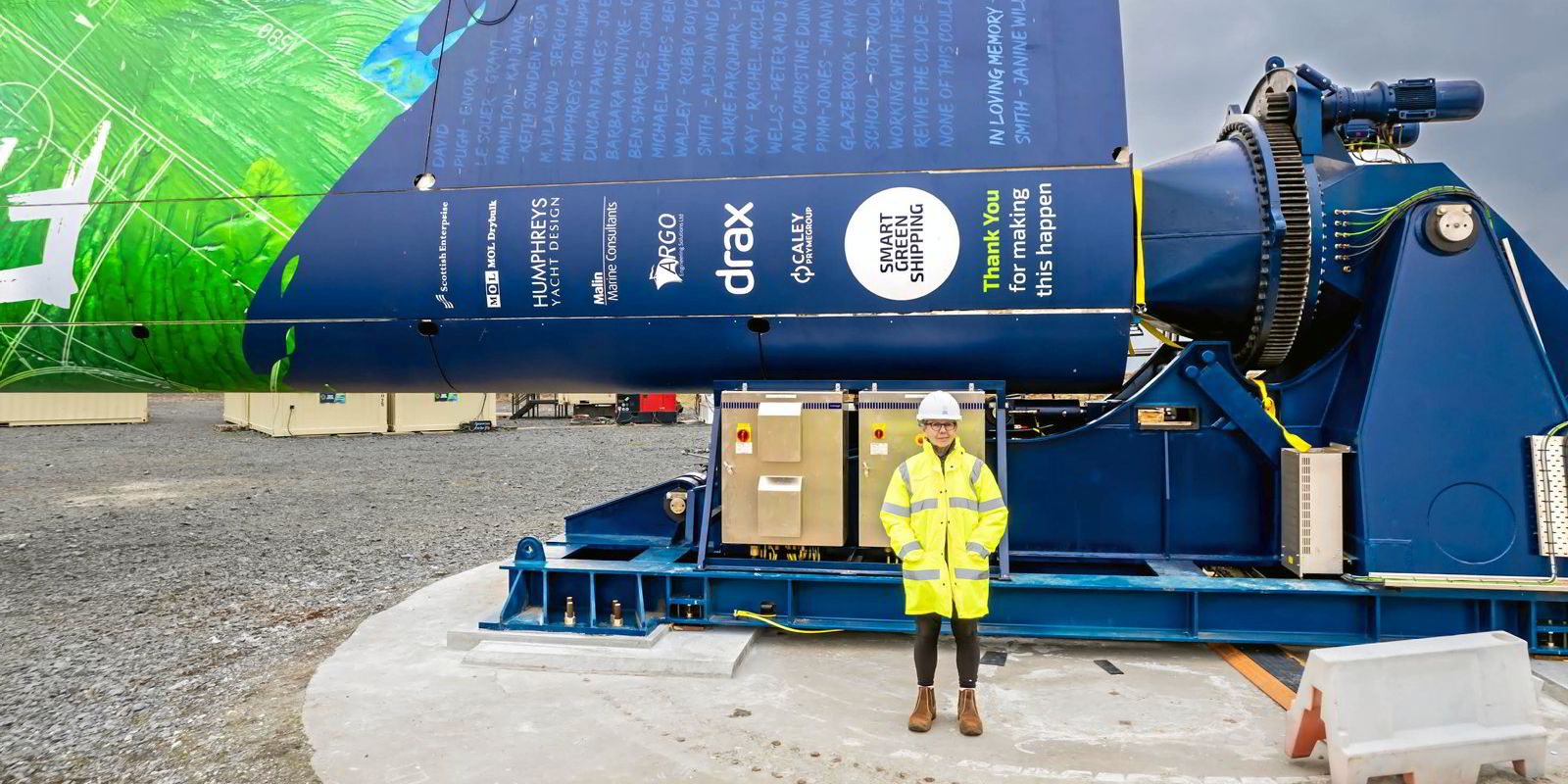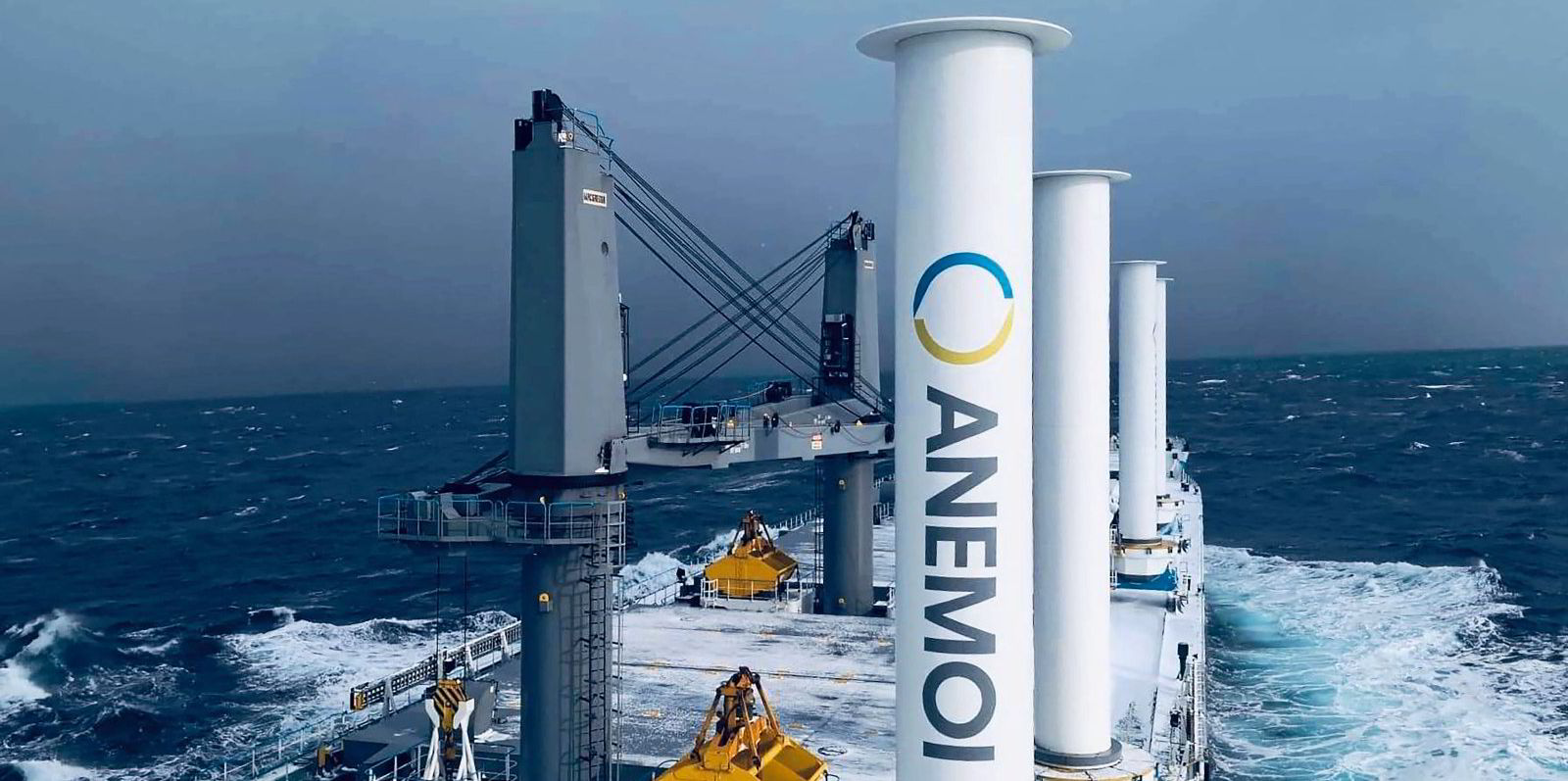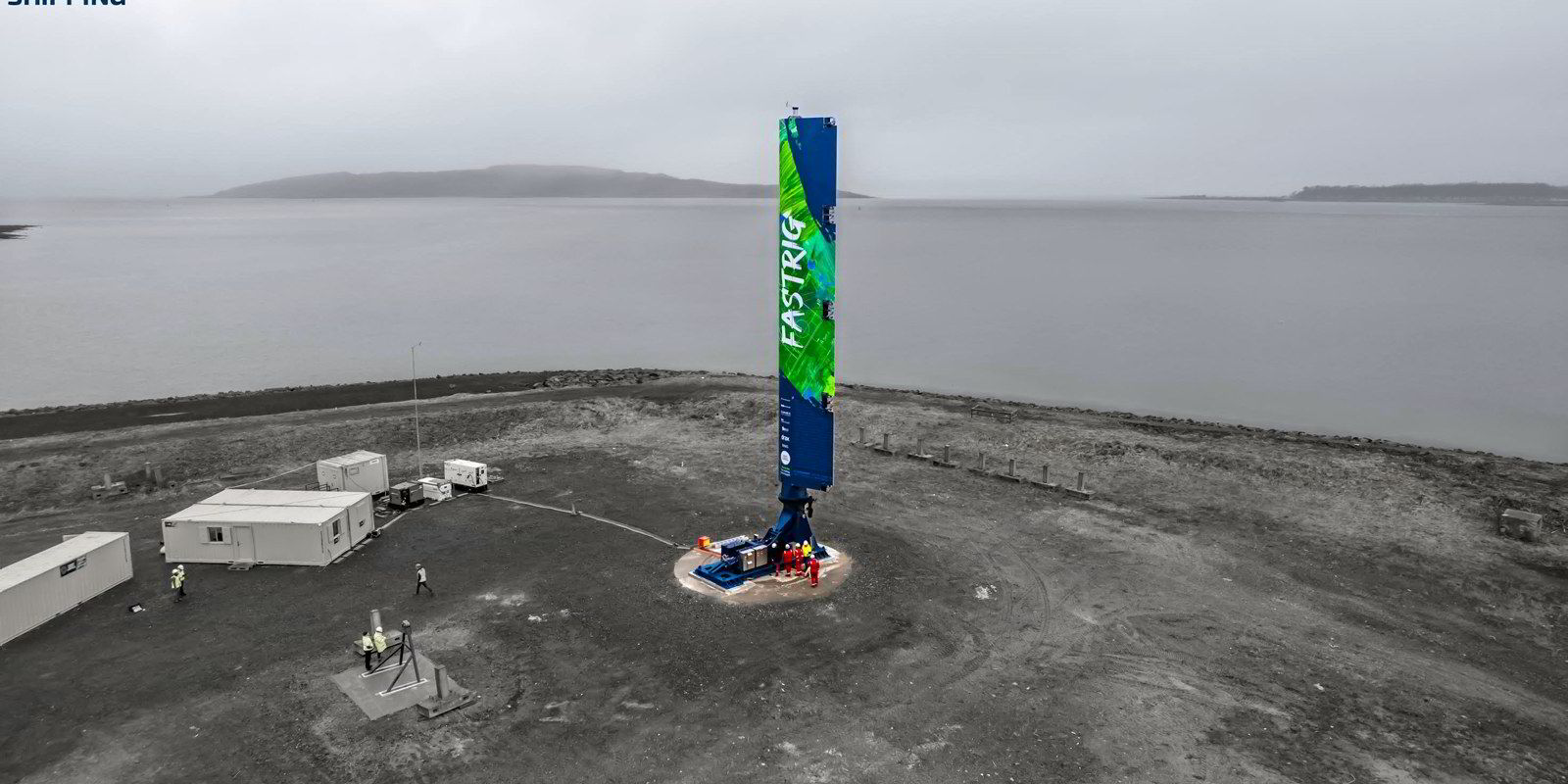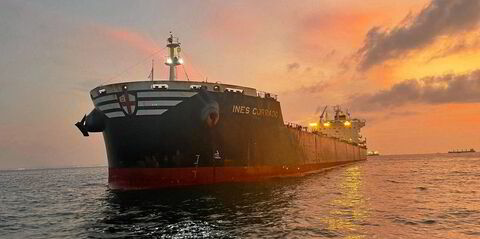The River Clyde was famous in the 19th and 20th centuries, synonymous with British shipbuilding, the rule of Britannia and the rise of the steamship, but that industry was swept into decline with the rise of faster, cheaper industries in the Far East about 50 years ago.
Now rising close to its banks, is a new sign of the times and fresh investment in British maritime technology.
A 20-metre bright blue and green wing structure sticks vertically into the Scottish air — symbolising Britain’s push into maritime cleantech. This is the test rig of a wind propulsion system installed by cleantech start-up Smart Green Shipping in Dumfries, Scotland.
Meanwhile further south, close to Merseyside, a proud maritime cluster, a second system will rise this year, from another windtech start-up, GT Green Shipping.
Both companies are part of something of a great British wind revolution, focusing on the advancement of systems designed for installation onto ships to decrease fuel costs and, for vessels using oil and natural gas-based fuels, to mitigate greenhouse gas emissions.
Spurred by the acceptance and growth of wind turbines, both onshore and offshore, Britain seems to be ready to adopt new technology for the shipping industry, and the government has perhaps realised the country could easily benefit from this, said Di Gilpin, who is founder and chief executive of Smart Green Shipping and also sits on the UK Department for Transport’s Clean Maritime Council.

Since 2021, the British government has been running a Clean Maritime Demonstration Competition, which has so far awarded four rounds of funding for technology projects.
Funds have been distributed across the span of maritime decarbonisation solutions, including port infrastructure, new fuels, electrification and wind. While the competition is technology agnostic, Gilpin thinks the benefits of wind propulsion are obvious.
“The UK, both industry and academia, is very good at innovation, sailing, maritime, aerodynamics, materials science, renewables technologies and commercial services to the industry,” she said.
“The UK has been proud of its climate leadership and the science shows that wind technologies give us the opportunity to decarbonise the fleet in line with short-term 2030 [International Maritime Organization] ambitions.
“When compared to the huge infrastructure costs for alternative fuels, wind represents really good value for money. So, I think this is all about the UK playing to its strengths.”

Gilpin’s Smart Green Shipping system, part of the Winds of Change project, is one of the largest to be funded.
The project includes the University of Southampton, Houlder, Humphries Yacht Design, Caley Ocean Systems and other businesses including ship manager Nuclear Transport Solutions.
The project will see a wingsail design and related measurement software of Smart Green Shipping temporarily installed on a UK-flagged nuclear waste carrier, the 4,902-dwt Pacific Grebe (built 2010), this summer for sea trials. (For full disclosure, TradeWinds’ Craig Eason is producing a short podcast series for the Winds of Change project.)
GT Green Technologies has been awarded funding under two rounds, first for feasibility studies and then for the construction and verification of a wing system.
It will install its test system on a Carisbrooke Shipping vessel in the summer. Carisbrooke has invested in GT Green Technologies, as has venture capital firm OnePlanetCapital, while GT Green secures $1.5m in seeding funding aimed at bolstering its research and development efforts.
These two companies are not the only ones to have been awarded funding to test out shipboard wind propulsion systems.
There are at least nine UK-based businesses, start-ups or entrepreneurs with wind solution ideas that have been awarded funding from the UK government’s Clean Maritime Demonstration Competition.
Another grant winner is WingTek, based in Bristol. It is looking to prove its sail design based on the Walker Wingsail, a system trialled four decades ago. Its funding is for a pair of test rigs to be put through their paces.
There is also Anemoi Technologies, a company that has had systems on board a Greek bulker for a few years and has been awarded funding to adapt its system to a new size.
Oceanic Wingsails, one of the round four award winners, is just kicking off its project. Founder Charles Magnan told TradeWinds his project will be developing a reefable rigid sail design, with initial trials being made on specially developed yachts he is developing, but with an eye to taking the designs into commercial shipping.
UK plays catch-up, quickly
One of the first wind concepts to be funded by the UK research grants was Artec Vida, which won some funding to assess the feasibility of a lateen sail system for a small container ship. TradeWinds has not been able to reach the project owners to determine how the project went.
Similarly, another project, Skytug, obtained funding at the same time for its feasibility study on integrating a wind propulsion system into a tugboat for ship-towing purposes. These initial, round one winners, won much less backing than the later project winners.

Another long-running project, believed to have secured funding through the Clean Maritime Demonstration Competition, but possibly faced challenges in securing additional backing, is Windship Technologies.
Gavin Allwright, secretary general of the International Windship Association, applauded the UK government for its investment in cleantech, especially in wind-assist projects.
And while he noted that there has been funding outside the four competition funding rounds, he believes the UK is coming late but quickly to the realisation it should be supporting maritime tech developments.
“One problem has been the political churn in the UK,” Allwright said. “It detached policy and strategy from what was being delivered.”
He pointed to the government’s attempt to rebuild shipbuilding in the country, which he said was never going to work commercially in a global market.
“The UK has world-leading technology innovation, and this is where the focus should be,” he said.
However, while the country has been supporting its homegrown wind propulsion start-ups, it has competition from other regions as commercial installations of wind systems have been ramping up.
Globally, there are systems installed on about 40 ships, but of these, only four are linked to UK-based companies.
Two vessels are equipped with Anemoi rotor sails, while the other two feature systems from BAR Technologies. BAR Technologies, despite not securing UK funding, received $1.5m in backing from the European Horizon programme. This funding was allocated for the installation of a rigid wing system on the Cargill-chartered 81,000-dwt bulker Pyxis Ocean (built 2017).
Both BAR and Anemoi have reached the commercialisation stage of their systems and are now working closely with shipyards, recognising the benefits of inclusion on shipyards’ approved supplier lists. Both companies have secured construction contracts in China.
Convincing shipowners
Shipping companies and investors are looking closely at wind.
Regulations in the maritime industry have made wind propulsion systems attractive as they help shipowners meet greenhouse emissions targets on existing vessels. Most wind assist solutions are designed to be retrofitted, as well as being installed on newbuildings.
But owners still need reassurance, said Gilpin.
In the past couple of weeks, Smart Green Shipping has begun testing its FastRig in Hunterston off the Clyde, and tests there will be ongoing until August when it will be dismantled and taken to Barrow for installation on the UK-flagged Pacific Grebe, one of three specialist vessels in the Pacific Nuclear Transport Ltd fleet.
“It is important to do the land tests, to ensure the systems are working as predicted and as safe as they are designed to be,” said Gilpin, noting the safety requirements that need to be met before installing a system on a nuclear waste carrier are some of the highest you can expect in the industry.
And the land and sea trials are important to reassure the industry, she continued. Assuming the trials are a success, Smart Green Shipping has potential clients lined up to install systems in 2025 and they need the assurances that their investments will give them peace of mind.



